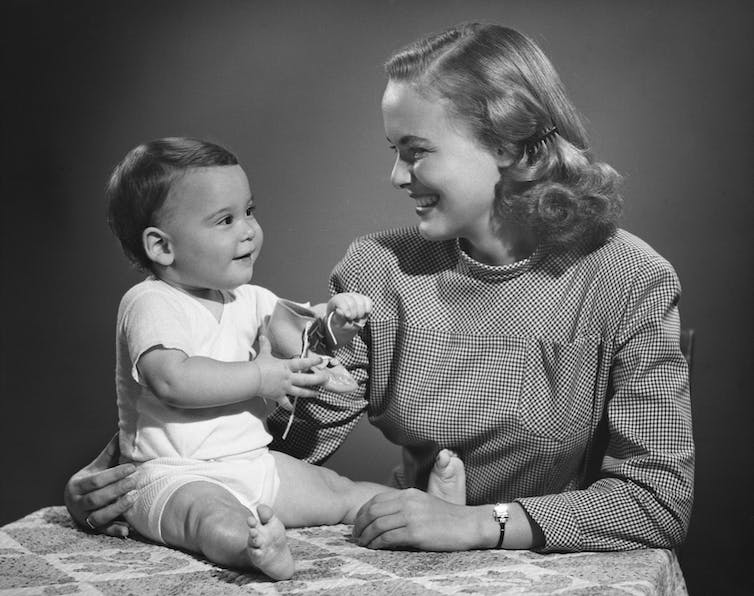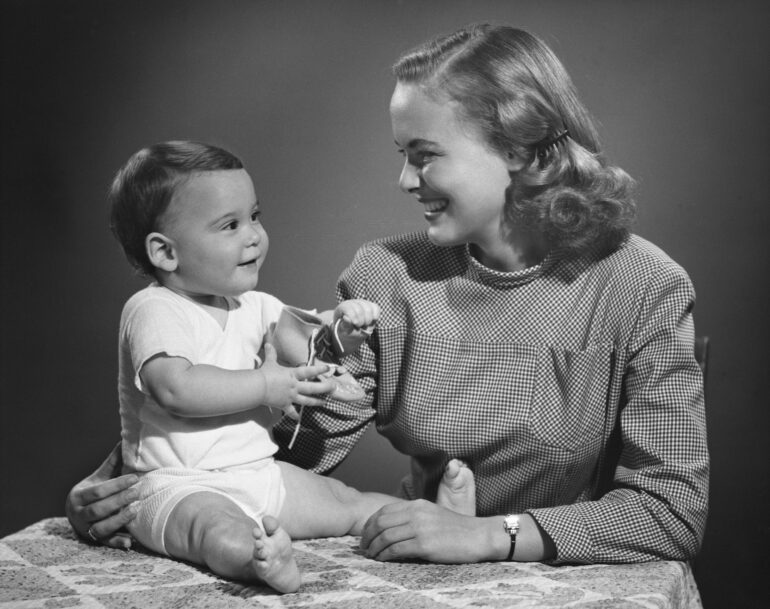Imagine a sudden rustle in the tall grass. A ripple of alarm passes through the group of early humans who live together amid ancient, rugged terrain. In the center of the encampment, a 3-year-old child – let’s call her Raina – stumbles and falls, her eyes wide with fear.
Without hesitation, her mother sweeps her up into her protective arms, while her grandmother quickly gathers herbs and leaves to create a pungent smokescreen to deter lurking predators. Simultaneously, Raina’s father and uncles move swiftly to the outskirts of the camp, their vigilant eyes scanning for signs of danger.
In this heart-pounding moment, Raina was enveloped in a web of care. Multiple caregivers worked seamlessly together, their collective efforts serving as a shield against the unknown threat that lurked beyond the safety of their campfire’s glow. It took a village to ensure Raina’s safety.
For at least 200,000 years, children grew up in a similar setting to Raina’s: a social environment with multiple caregivers. But 20th-century child psychologists placed almost exclusive importance on the mother-child bond. Research on children’s attachment relationships – the emotional ties they develop with their caregivers – and how they influence child development has had a mother-centric focus. Academic psychology’s emphasis on the child-mother relationship can be at least partly attributed to social norms about the appropriate roles of mothers and fathers. Whereas fathers have been characterized as the breadwinners, mothers have been thought of as more involved in the daily care of children.
We are clinical-developmental psychology and child and family researchers interested in studying how the quality of child-caregiver relationships affects children’s development. With 29 other researchers, we started a research consortium to study children’s attachment relationships. Together, we ask: How does having attachment relationships to both mothers and fathers affect children’s socioemotional and cognitive outcomes?
Mother-centric attachment research
Children develop attachment relationships with people whose presence around them is stable over time. For most children, these people are their parents.
Social scientists broadly classify attachment relationships as secure or insecure. A secure relationship with a specific caregiver reflects a child’s expectation that when they’re alarmed – as when emotionally or physically hurt – this caregiver will be available and emotionally supportive. In contrast, children who are uncertain about the availability of their caregivers in times of need are likely to form an insecure attachment relationship.

The emphasis on a mother’s love alone is outdated.
George Marks/Retrofile RF via Getty Images
In the U.S. and Europe, where most attachment research has been conducted to date, the primary caregiver was frequently assumed to be the mother. Accordingly,…



